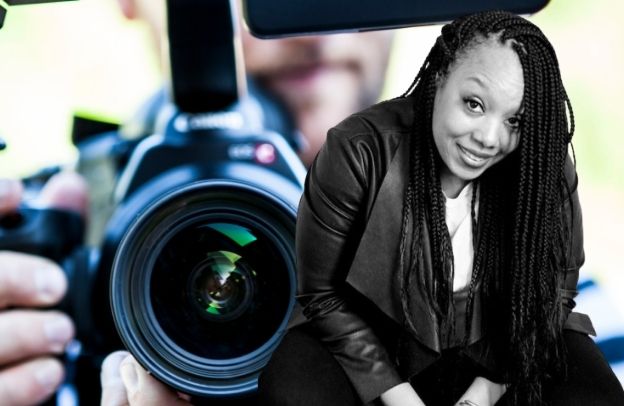How to Deal With Toxic Relationship In Business Environment – Amanda Craven

In a recent episode of the Obehi Podcast, listeners were treated to an enlightening exploration of toxic relationships within professional settings, featuring the Clinical Hypnotherapist, Amanda Craven. Through engaging dialogue, Amanda, who is well known for her multifaceted expertise spanning hypnotherapy, life coaching, psychology, authorship, and public speaking, provided a wealth of insights that are applicable to navigating toxic relationships, particularly within the area of business and professional life.
Want to learn more about storytelling? Start by downloading the first chapter of The Storytelling Mastery.
Reflecting on her personal journey, Amanda shared emotional insights into the impact of early experiences on one’s interpersonal dynamics. “In many ways, I was a very sensitive child growing up in the 1970s,” she recounted.
“The world didn’t really accommodate sensitive people very well. So, I think that impacted my self-confidence and self-esteem, leading to struggles with mental health, including depression and anxiety throughout my childhood,” she added.
People, as often said, are products of their experiences and that is true for Amanda, who took time to explain her background leading into what she does today within the field of hypnotherapy and how he uses her knowledge to help other individuals in need. See the full interview with Amanda:
Primary causes of Toxic Relationship
What are the primary causes of Toxic Relationships? one might ask. Well, toxic relationships can stem from a myriad of underlying causes, often rooted in unresolved trauma, distorted power dynamics, and dysfunctional communication patterns.
Individuals who have experienced past wounds, whether in childhood or previous relationships, may unknowingly carry these unresolved emotions into their current interactions, thereby perpetuating cycles of toxicity.
Additionally, disparities in power dynamics, such as unequal distribution of authority or manipulation tactics, can exacerbate tensions and breed toxicity within relationships.
There are also, there are times when poor communication habits, including lack of boundaries, and passive-aggressiveness can play a part.
In the article, 7 types of toxic communication styles that are affecting your relationship, available at Mindspacecafe.com, the writer highlighted the error of constant blame, “Suppose your partner is constantly finding fault with you and complains about every single thing wrong with their life without trying to compromise or solve the problem.” adding that “in that case, this type of communication is very toxic”.
See also Unlock The Influence of Positive Thinking Harnessing the Power of Your Thoughts with Melvinia Ford
Other situations such as invalidation of feelings, can also contribute to creating an environment that helps toxicity to flourish, thereby hindering authentic connection and mutual understanding in relationships.
It might also help to look out for societal influences, such as unrealistic expectations of relationships. These can end up being perpetuated by media or cultural norms and therefore can contribute to distorted perceptions of healthy interaction.
Addressing these root causes will require a combination of self-awareness, open communication, and professional guidance to foster healing. It will also help to establish healthy boundaries and cultivate mutual respect within relationships.
Remember that not paying attention to these concerns can be catastrophic for individuals which is why there is the need to seek the help of experts like Amanda.
Drawing from her wealth of experience, Amanda has crafted a comprehensive 6-step strategy aimed at empowering individuals to transcend past wounds and unlock their fullest potential. Her programs focus on such fundamentals as:
- Awareness: The journey towards healing begins with the acknowledgment of the existence and impact of toxic relationships.
- Acceptance: Embracing one’s experiences without judgment is crucial for fostering healing and growth.
- Healing: Engaging in intentional healing practices, whether through therapy, self-reflection, or holistic modalities, is paramount for reclaiming personal power.
- Goal setting: Setting clear intentions and goals empowers individuals to chart a course towards a thriving future.
- Personal Growth: Committing to continuous self-improvement cultivates resilience and fortitude in the face of adversity.
- Business Growth: Prioritizing personal well-being lays the foundation for transformative growth in professional endeavors.
In her complimentary 45-minute consultation, Amanda provides a nurturing environment for individuals to explore the root causes of their challenges and determine whether her approach resonates with their needs.
Considering toxic relationships and how they can impede personal and professional progress, Amanda should be seen as a true hope, guiding individuals toward liberation, empowerment, and ultimately, fulfillment. So, if you feel you need help, don’t hesitate to reach out to her.
See also Business And Career Fulfillment – What You Need to Know with Crystal Barrow
Build a Toxic – free business and professional environment
The importance of toxic-free relationships in a business and professional environment is huge. In a business and professional environment, toxic-free relationships are paramount for fostering productivity, collaboration, and overall organizational success.
Toxic dynamics, marked by distrust, manipulation, and conflict, not only erode morale and team cohesion but also impede innovation and hinder progress toward shared goals.
If you think about it, toxic relationships can have far-reaching consequences, including increased employee turnover, diminished job satisfaction, and reputational damage to the organization.
By prioritizing healthy, respectful interactions, businesses can cultivate a positive work culture where individuals feel valued, supported, and empowered to contribute their best, ultimately driving sustained growth and prosperity.
Now, here are some effective ways to build Toxic-free relationships in a business and professional environment. Make sure to pay attention to every single one of them:
Clear Communication and Boundaries
Establishing clear lines of communication and setting boundaries is fundamental for cultivating toxic-free relationships in a professional environment. You can do this by encouraging open dialogue allowing team members to express their thoughts, concerns, and expectations freely, thereby fostering mutual understanding and respect.
Clearly defining boundaries helps prevent misunderstandings and minimize the risk of conflict by delineating acceptable behaviors and interactions.
By promoting transparency and accountability, organizations can create a culture where individuals feel safe and empowered to address issues constructively, mitigating the potential for toxicity to take root. That is followed by emotional intelligence and empathy.
Promoting Emotional Intelligence and Empathy
Emotional intelligence (EI) refers to the ability to recognize, understand, and manage both our own emotions and those of others. It encompasses skills like self-awareness, self-regulation, empathy, and social skills.
What this translates to is that individuals with high emotional intelligence can navigate complex social situations effectively, better regulate their own emotions in challenging circumstances, empathize with others, and build stronger interpersonal relationships.
EI is essential for personal and professional success, as it enables individuals to communicate effectively, resolve conflicts, and adapt to changing environments with resilience and empathy.
Do you want to build a toxic-free business and professional environment? Understand that cultivating emotional intelligence and empathy among team members is essential for fostering toxic-free relationships in a business setting.
Make sure to encourage individuals to develop self-awareness, self-regulation, and social skills because these will enable them to navigate interpersonal dynamics with sensitivity and compassion.
Let’s consider another, equally vital part of the conversation Conflict Resolution and Mediation.
Learn How to Mediate and Resolve Conflicts
Implementing effective conflict resolution strategies and providing mediation resources is crucial for addressing and preventing toxicity in professional relationships.
By that, I mean offering training in constructive conflict resolution techniques will better equip team members with the skills to navigate disagreements and resolve disputes constructively.
It will be helpful also to have designated mediators or HR professionals trained in conflict resolution who can provide impartial support and guidance when conflicts arise. When available, it is the job of these individuals to help de-escalate tensions and facilitate constructive dialogue.
By doing this, organizations can effectively prevent resentment from festering and create a culture where differences are valued and opportunities are well leveraged for growth and collaboration.
Want to learn more about storytelling? Start by downloading the first chapter of The Storytelling Mastery.






